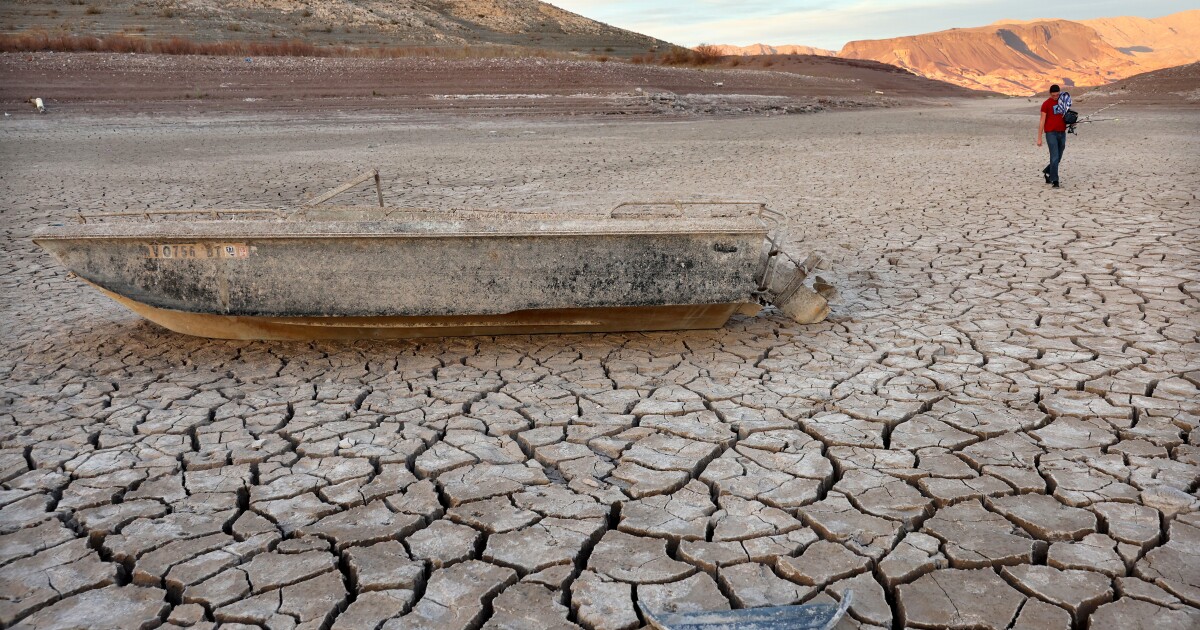You are using an out of date browser. It may not display this or other websites correctly.
You should upgrade or use an alternative browser.
You should upgrade or use an alternative browser.
Official Climate Change Thread
- Thread starter 88m3
- Start date
More options
Who Replied?gotta respect when one side has a single minded pursuit to accomplish their goals. the other sides bickers about purity and then whines about the decisions.
That side that aligns easily, is motivated by greed and hatred.gotta respect when one side has a single minded pursuit to accomplish their goals. the other sides bickers about purity and then whines about the decisions.
been over, our current usage of the planets resources at humanities population growth rate is non sustainable, if a asteroid doesn't get us or we blow ourselves up, climate change will be our undoingIt's over
The sinking ship my niece and nephews are inheriting.been over, our current usage of the planets resources at humanities population growth rate is non sustainable, if a asteroid doesn't get us or we blow ourselves up, climate change will be our undoing

The sinking ship my niece and nephews are inheriting.


As water crisis worsens on Colorado River, an urgent call for Western states to 'act now'
The federal government is telling seven states to make plans for drastically cutting water use along the Colorado River within two months.
Nero Christ
Sniper out now on all digital platforms brev
it's like watching a car slowly drive towards a cliff and no one bothered to hit the brakes and turn around smh
Northern Italy thought it was safe, that the climate change was something happening only in the world south...
Now there is the worst drought in 70 years.
It snowed just a bit once this winter, and there was barely any rain...
All hydroelectric plants had to release some water for agriculture and for public consumption.
This is adding to Italian energy woes due to the war in Ukraine.
Italy is producing roughly 50% of its electrical energy using imported gas (mostly from Russia).
22 municipalities in Northern Italy have to bring water by trucks, they have switched the water off during night.
Water operators for public consumption are mostly privatized and with barely any public oversight of investing in maintenance, they are losing around od 40% of water for public consumption...
A tragedy in this situation.
We are approaching an autumn with shortages of water, shortages of food and shortages of energy.
Now there is the worst drought in 70 years.
It snowed just a bit once this winter, and there was barely any rain...
The production of hydroelectric power, which usually supplies 15% of the country’s needs, is down 50% so far this year from 2021. Compounding the region’s woes, the Adriatic sea has entered into the Po delta for at least 10 kilometers, threatening farm lands and raising the risk of salty water in taps. Northern Italian towns are rationing water and supplying it in trucks as they face a potential drinking-water shortage.
The drought may bring significant economic pain. The Po river, which flows from west to east in northern Italy, is a lifeline for such major industrial centers as Milan and Turin — home to the maker of Fiat cars and steel pipes manufacturer Tenaris SA. Lombardy and Piedmont, the regions where the cities sit, are also big agricultural producers, accounting for 93% of Italy’s rice production. With water availability more than halving in east Piedmont, this year’s crop is under threat, local farmers say.
“The situation is dramatic for some crops,” said Ercole Zuccaro, director of Piedmont’s farm-industry association Confagricoltura. “Climate change is obvious here. Long periods of drought are interrupted by severe weather.”
One thermoelectric plant also had to be shut down because it needs water for turbine cooling.The association estimates forage, barley and grain crops will be down 30% to 40% this year, with repercussions for livestock, which will have to be slaughtered for meat earlier than expected. It will aggravate the surge in food prices for consumers and in production costs for farmers. Production of hazelnuts and wine could be affected too, Zuccaro said. Piedmont is Italy’s largest producer of hazelnuts. Grape harvesting will probably be lower than usual, he said.
All hydroelectric plants had to release some water for agriculture and for public consumption.
This is adding to Italian energy woes due to the war in Ukraine.
Italy is producing roughly 50% of its electrical energy using imported gas (mostly from Russia).
22 municipalities in Northern Italy have to bring water by trucks, they have switched the water off during night.
Water operators for public consumption are mostly privatized and with barely any public oversight of investing in maintenance, they are losing around od 40% of water for public consumption...
A tragedy in this situation.
We are approaching an autumn with shortages of water, shortages of food and shortages of energy.
Last edited:
ADevilYouKhow
Rhyme Reason
Texans are witnessing 'exploding trees' they say sound 'like gunshots going off' amid brutal winter storm
Water in a tree's sap freezes and expands in cold weather, causing its limb to snap and creating a popping noise in the process.
ADevilYouKhow
Rhyme Reason

The Water Wars Come to the Suburbs
A community near Scottsdale, Arizona, is running out of water. Amid the finger-pointing, the real question is: how many developments will be next?
Nero Christ
Sniper out now on all digital platforms brev
they mean the Supreme Court has dealt a major blow to people who live on Earth
88m3
Fast Money & Foreign Objects

File:Gwsanjoaquin.jpg - Wikimedia Commons
 commons.wikimedia.org
commons.wikimedia.org